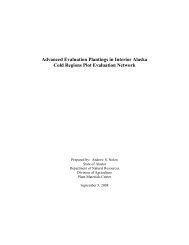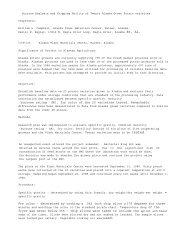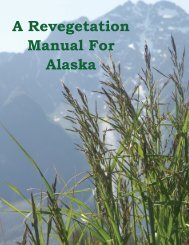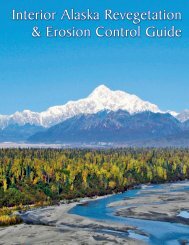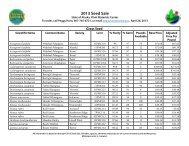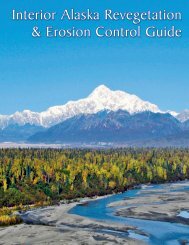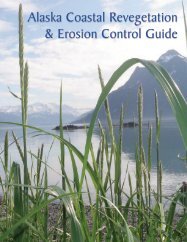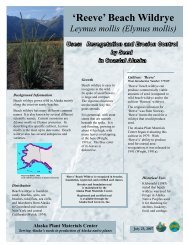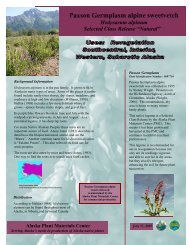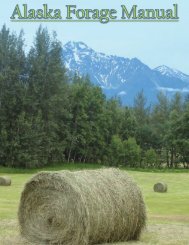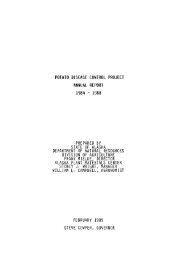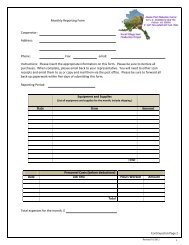Alaska Forage Manual - Alaska Plant Materials Center - State of ...
Alaska Forage Manual - Alaska Plant Materials Center - State of ...
Alaska Forage Manual - Alaska Plant Materials Center - State of ...
Create successful ePaper yourself
Turn your PDF publications into a flip-book with our unique Google optimized e-Paper software.
<strong>Forage</strong> Types<br />
Photo: <strong>Alaska</strong> Division <strong>of</strong> Agriculture<br />
A farm near Palmer<br />
<strong>Forage</strong> crops can be consumed fresh when grazed by animals in a pasture setting.<br />
<strong>Forage</strong>s can also be harvested, cured, and preserved in many forms for future<br />
use. <strong>Forage</strong> can be baled into different shapes and sizes and/or stored as silage. Hay<br />
is a major source <strong>of</strong> fodder for the livestock industry during the dormant season.<br />
Animals prefer plants in the early growth stage (vegetative or boot) when the<br />
nutritional content <strong>of</strong> the plant is the highest. For hay and silage purposes, the best<br />
compromise between quality and yield occurs when the hay is harvested before flowering.<br />
The leaves <strong>of</strong> most forage species have the highest nutritional content. The<br />
stem is <strong>of</strong> lower quality due to higher concentrations <strong>of</strong> lignin, cellulose and hemicelulose.<br />
Crops for use as silage are placed in a pit or silo to begin the ensiling process.<br />
An anaerobic environment is necessary to maintain the good feed quality that can be<br />
achieved with silage.<br />
The period when forage is actively growing and nutritious in <strong>Alaska</strong> is considerably<br />
shorter than the lower 48, due to <strong>Alaska</strong>’s short growing season. Therefore the<br />
identification <strong>of</strong> species growth stages, and the proper timing <strong>of</strong> animal placement<br />
on pasture needs to be managed carefully. Improper management could result in a<br />
missed cutting for a hay crop, requiring supplemental feed to balance animal’s diet.<br />
Animals placed on the pasture when the forage conditions are least favorable (flowering,<br />
seed ripening stage) may not get the full nutrient potential <strong>of</strong> the forage crop.<br />
6



